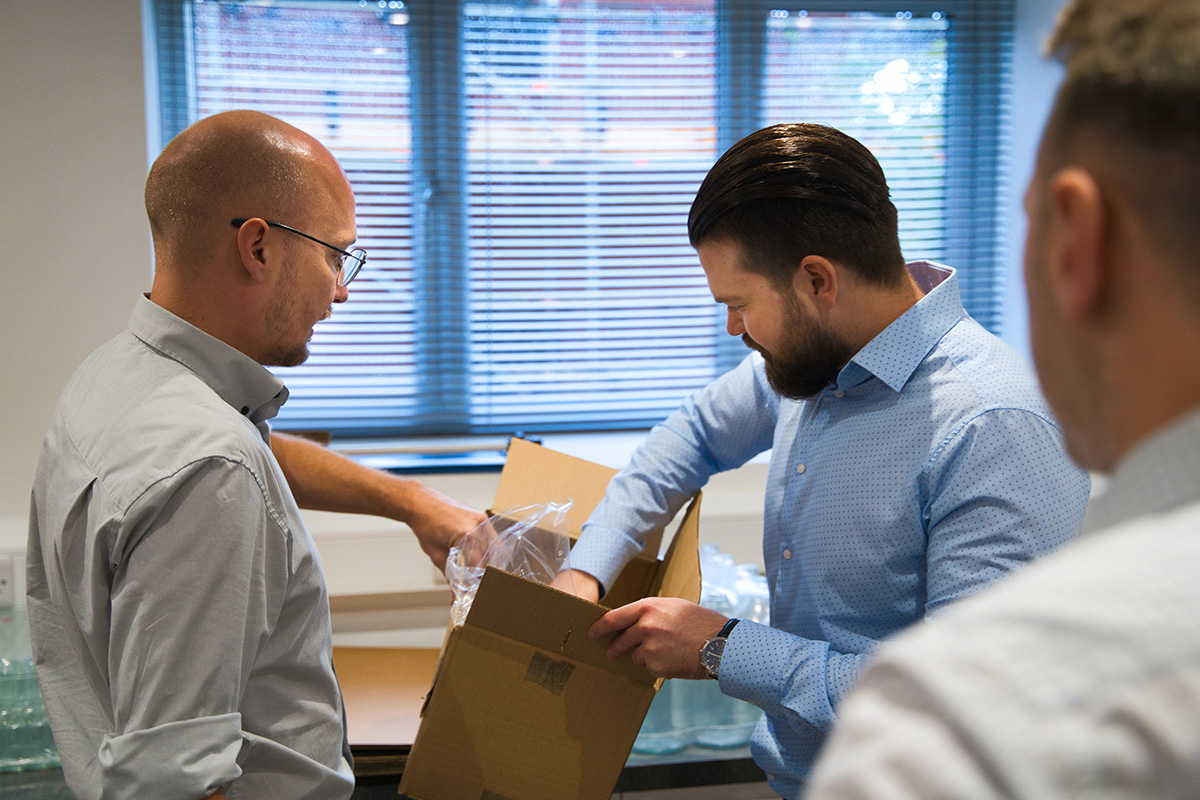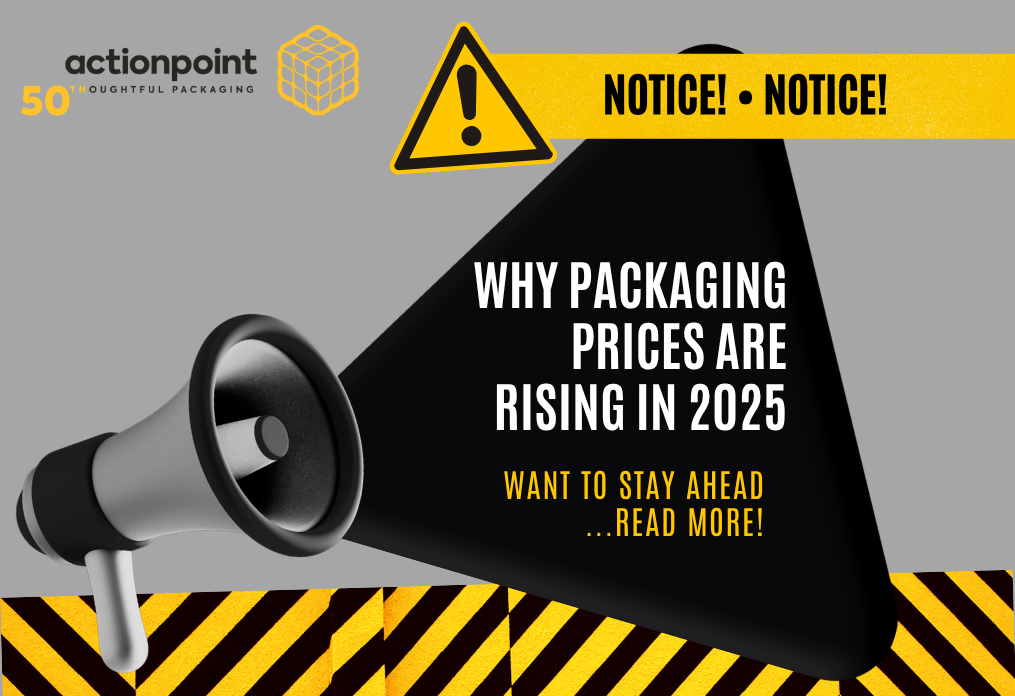At Actionpoint, one of the services we offer our customers is a packaging review called Insight. It’s aptly named. Insight involves a packaging expert visiting a business to view their packaging processes first hand, ask questions, and then make recommendations for improvement. And there is always a saving to be made.
A packaging specialist brings a fresh perspective along with knowledge and guidance most companies do not have in-house. Straightaway, they recognise areas of huge potential, such as:
- Identifying cheaper packaging materials that match current performance.
- Modifying packaging design to reduce damages and/or for faster assembly.
- Reducing stock-keeping units (SKUs) to free up space for more products.
- Reorganising a packing station/workflow to speed up order fulfilment.
It’s these types of highly effective changes that can lead to an operational cost saving of 10%.
How does Insight work?
It starts with a sit-down meeting. Before the Insight packaging review begins, there is a conversation with key individuals to confirm packaging problems and goals. Ideally, attendees represent departments including operations, purchasing, production, quality, and warehouse. It’s important to have their input to highlight any sticking points and support employee buy-in if any changes are implemented later on.

Immediately following the meeting, the auditor takes a tour of the facility accompanied by at least one representative from the company. The customer chooses the length of the audit, which can be as short as an hour if they only want to assess one aspect like packaging products and materials, up to half a day for multiple areas such as damages, pack time, unboxing, and sustainability.
A report is written up outlining anything that would benefit from adjustment and why. Practical steps are suggested, which can be taken in the immediate and/or long term, to unlock savings and boost efficiency. This comprehensive document is presented during a follow-up meeting, allowing for questions to be answered and plans to be put in place.
What are the most common issues?
The Insight programme has been running for many years, identifying a range of problems and solutions, but these issues crop up on a regular basis:
- People buy the packaging they’ve always bought. Occasionally, companies may invite manufacturers to tender, to keep the price in check, but it is usually like-for-like packaging. There are 3 main reasons for this. It doesn’t occur to the company to try anything different, or they assume all packaging is the same, or they are worried about rocking the boat – it’s safer to stick with the familiar.
- Packaging is usually over-spec’d. From raw materials to finished product, packaging is sold by weight. It’s in everyone’s interest to sell as much weight as possible. This means packaging is often of a much higher grade and more expensive than it needs to be to do its job.
- Silo mentality. Packaging aspects are treated separately instead of assessed on how they interact. For example, a business uses a large amount of tape because their box has a high failure rate. Instead, they could amend the design or material or create a fitment. Less or no tape would make it quicker and easier to pack, cut waste, and look better to the end user.
Are there any downsides of Insight?
Most customers are pleasantly surprised by the opportunities opened up by Insight, but some do experience disappointment – when they realise the savings they have missed out on over the years!
But seriously, there are vanishingly few disadvantages. The main one is time out of your day. However, this can be arranged around your schedule and the audit’s duration will take as little or as long as you like. For a minor inconvenience you could be reaping significant rewards.
On rare occasions, there could be recommendations that would improve your bottom line but may not be palatable. For instance, if a customer’s transit box is white it shows up every dirty fingerprint and mark from the warehouse and van. Insight may propose using a brown box to save costs and enhance appearance, but that may not be welcomed if the customer’s brand colour is white.
Having said that, the beauty of the review is that you are not compelled to act on any of the advice. It’s entirely up to you which, if any, ideas you choose to implement.
What are the advantages of Insight?
Insight thinks outside of the box. Allow us to illustrate with an example. Let’s say a company uses printed folded cartons but isn’t getting the best deal from the existing supplier. They approach manufacturers for quotes and the prices are broadly similar except for one wild card, which comes in 5% cheaper. But as the wild card is unknown, buyer’s risk kicks in. What happens next? The company goes back to their existing supplier and negotiates a 5% discount. The status quo is resumed.

What doesn’t happen is a supplier says: “Put it in a recyclable plastic bag and you’ll save 6%.”
In other words, manufacturers will only talk about the products they make. But those packaging products will not be the best solution for every customer in every scenario.
Insight, on the other hand, isn’t limited to a certain type of packaging. As a bespoke service, it takes a holistic view of the customer’s packaging from materials and design all the way through to packing, storage, and delivery arrangements. The auditor adds the customer’s packaging targets to the mix, such as environmental concerns, and then makes practical suggestions that will make tangible benefits to the business.
Recommendations are made in the customer’s interest and based on the latest materials, updates, and legislation in the packaging industry. The latter is particularly relevant with the UK Government’s recent introduction of new laws to reduce packaging waste. Companies concerned about Plastic Packaging Tax or the upcoming Extended Producer Responsibility scheme would be wise to take advantage of an Insight audit. It’s the chance to get tailored advice from a seasoned expert on how to adhere to the legislation without being stung by excessive costs.
Typical outcomes of an Insight review include:
- Decreased carbon footprint.
- Streamlined packaging management.
- Reduction in packaging bulk and waste.
- Cost-savings on materials and transportation.
- Enhanced efficiencies and faster order fulfilment.
Next steps
As you can see, an Insight audit is a powerful way to optimise your packaging processes. But it’s not a ‘one and done’ exercise. Regular check-ups help you to measure progress, as well as spot any new niggles that can be smoothed out before they become an expensive problem. An annual Insight would support continuous improvement and keep you in the loop on the latest innovations. Technology moves on in leaps and bounds and the packaging industry is no exception. Over a 12-month period, there may well be a new and better way to package your goods: lighter, stronger, more energy-efficient, and kinder to the environment.
Contact Actionpoint to find out more about the Insight audit, how it can help your company, or to arrange a packaging process review.




